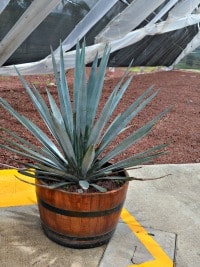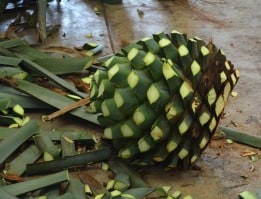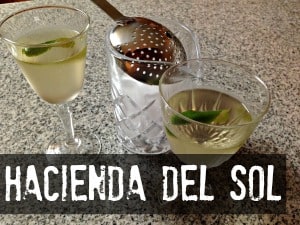The Mixology Talk Podcast
Episode Three: Tequila!
It is summer here in Northern California and that means lots of Tequila cocktails! In today’s episode we’re talking about Tequila – what is it, how it’s made, and how it’s used in common cocktails.
Click here to Subscribe on your Smartphone and never miss an Episode!
On your iPhone:
Look for the iPhone’s default “Podcasts App”. It may already be there, or you may need to download it. It looks like this:
- In the app, click “Search” in the bottom-right corner and search for “Mixology Talk Podcast“
- Click on the icon under the “Podcasts” section, and in the next screen click the purple “Subscribe” button.
Note:
If you prefer, you can also subscribe using the “Stitcher” app, also free & available in the App store.
On your Android Phone:
Download the “Stitcher” app from the Play store by searching for “Stitcher”
- Click on the “Search” icon and search for “Mixology Talk Podcast
- Click “+” to add the show to your Playlist.
Listen Now:
How’s Tequila Made?
- Tequila is always made from the Agave plant, and usually Blue Agave. This is a cactus-like plant that’s grown for 7-10 years before harvesting.
- The leaves are all cut off and the center (which looks a bit like a pineapple and is called a Piña) is roasted, then pressed to extract the juice.
- This juice is fermented, and the resulting “Agave Wine” is distilled in a process similar to what we discussed with vodka.
- Some types of Tequila are then aged in stainless steel or wooden barrels.
Mexican laws state that tequila can be produced only in the state of Jalisco and limited regions in the states of Guanajuato, Michoacán, Nayarit, and Tamaulipas. The United States officially recognizes that spirits called “tequila” can only be produced in Mexico, although by agreement bulk amounts can be shipped to be bottled in the U.S. (Source)
Types of Tequila:
Mixto:
The term “Mixto” means that only 51% of what’s in the bottle is made with Agave. The rest can be made with sugar cane. This type is generally cheaper, but in my opinion isn’t worth it. If you’re on a budget, skip anything with “Mixto” on the bottle and go with an inexpensive Blanco or Silver.

Blanco or Silver:
Called “blanco” for a reason – this type of Tequila is clear in color. It can be aged up to 3 months in stainless or wood barrels, but doesn’t have to be aged at all. This is a great Tequila to start working with in Cocktails and has a clear, smooth, flavor.
Buying Blanco / Silver: You’ll spend as little as $20 for a decent blanco like Espolon, Corralejo or El Jimador.
Reposado:
In Spanish, “reposado” means “rested.” So it makes sense that this type of Tequila always spends some time in oak barrels – from 3 months up to a year. This time in oak will have an impact on the color and flavor. Reposado Tequilas have an amber colored hue and you’ll start to see the clean, vegetal flavor be replaced with vanilla and spice from the barrels.
Buying Reposado: You’ll spend a little more than Blancos, due to cost associated with storage during aging. A solid Reposado will go for between $20 – $30 a bottle.

Añejo
Tequila with “Añejo” on the bottle must have been aged between 1-3 years in Oak barrels. This aging tends to increase the cost and as a result it’s rare to find an Añejo tequila in a cocktail. This is a great option for a sipping tequila, however, and you’ll start to see a stronger color and much stronger barrel influence in the flavor as well.
Buying Añejo: You can get a very inexpensive Añejo starting around $25, but you get what you pay for. Prices range as high as $100 and tend to correlate with quality and length of aging.
Extra Añejo
You’re probably sensing a theme here. Extra Añejo tequila spends the most time in barrels – a minimum of 3 years. There is no maximum. These are “special occasion” sipping Tequilas. The kind of thing you save for your Father in Law (or for after he leaves). Extra Añejo Tequilas start to exhibit some of the qualities of fine aged Whiskeys and Cognacs, as all three spend a great deal of time in barrels.
Buying Extra Añejo: This type of Tequila usually starts around $100 a bottle.
Mezcal:
We’re cheating here – Mezcal isn’t actually a type of Tequila (though Tequila IS a type of Mezcal). We did want to mention it as they have some commonalities and Mezcal is something that we’re starting to see more frequently in Cocktail bars in San Francisco. Mezcal is known for its very smokey flavor and is a great way to introduce a “smoke” element to a cocktail.
Buying Mezcal: It can be tricky to find Mezcal, and as a result they can be quite expensive. In our experience they start around $40 a bottle.
Great Tequila Cocktails:
- Margarita (You saw that coming)
- Paloma
- El Diablo
- Bloody Maria (A Bloody Mary with Tequila)
We’re Drinking the Hacienda del Sol
This is Chris’ very own cocktail that’s spirit focused but still exhibits the bright summery characteristics of its ingredients.
Ingredients:
- 1 oz Blanco Tequila
- 1 oz Cocchi Americano or Lillet
- 1/2 oz St. Germain
- One dash of Orange or Grapefruit bitters
Instructions:
Combine ingredients in a mixing glass and stir with ice to chill. Strain into a chilled spirits glass and garnish with a lime twist.

Thanks for Listening!
Next time we’re talking about a spirit loved by Pirates and hated by Bartenders… stay tuned!




I hate to be this guy again lol, but isn’t a bloody mary with gin called a Red Snapper? And a Bloody Caesar, a bloody mary with Clamato instead of tomato juice?
Definitely didn’t know that – thanks Dave!